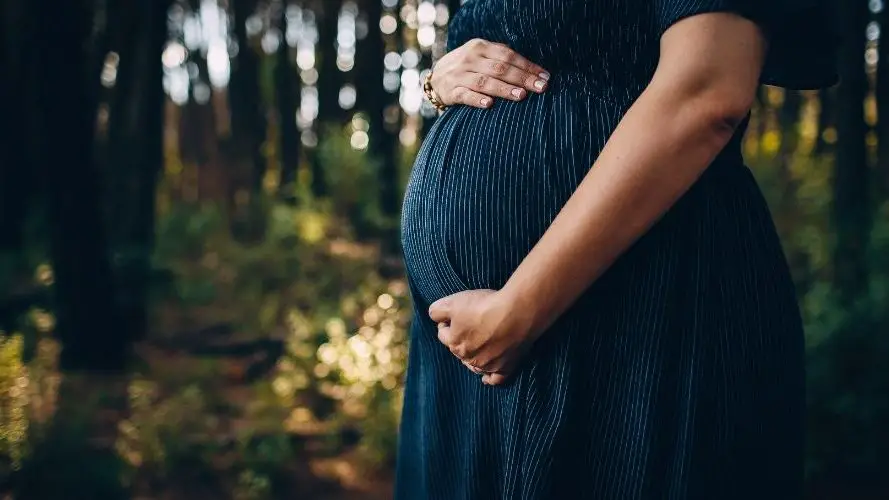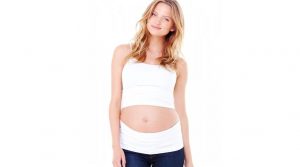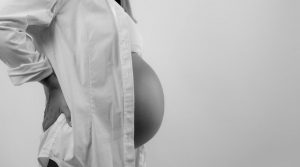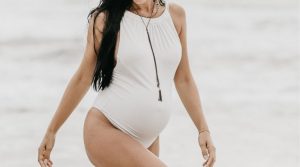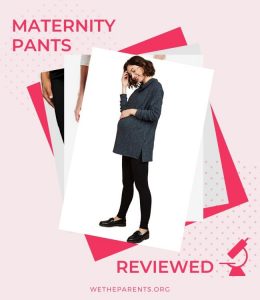You’ve shared the good news with family and friends, and maybe even started your baby registry.
You’re starting to notice changes in your body, but you’re not sure when to break out your new maternity clothes — sound familiar?
There’s no hard and fast rule concerning when to start wearing maternity clothes.
Most women have made the switch by the middle of their second trimester, but it makes the most sense to make the change gradual, on your own timeline.
Wondering how important a maternity wardrobe really is, and which pieces will get the most long-term use?
Let’s jump in.
In this article:
Do you really need maternity clothes?
Your body changes significantly during pregnancy, but it’s hard to predict how much until pregnancy progresses.
Most expectant mothers choose a maternity wardrobe with loose-fitting, cozy clothes that flatter their bump in order to keep comfortable and avoid stretching out their regular clothes.
You may want to wait and see how your body changes in pregnancy before choosing a maternity wardrobe.
If the changes are relatively minimal, some of those loose-fitting shirts, hoodies, and jackets could well stay in rotation.
However, it’s hard to avoid picking up a few tops, pants, and undergarments to accommodate your growing belly, even if not gaining much weight.
If you’re keeping a tight budget in preparation for the baby, keep in mind that maternity clothes don’t have to cost a massive amount.
A few nice pieces for wearing outside are helpful, though there’s nothing wrong with raiding your partner’s closet for oversized t-shirts and sweats to wear at home.
Another option is shopping second-hand, which is especially practical if this is your last pregnancy or if you’re only planning for one child.
It’s both environmentally friendly and economical, and you can often find great quality stuff from good brands at low prices.
Related: The few bits of pregnancy gear you actually need
When to start wearing maternity clothes
When should you start wearing maternity clothes?
Whenever you need to! There’s no set rule here.
It really depends on when your body begins to change, which, for most women, is around 20 weeks (or five months) into pregnancy. 1Your pregnancy symptoms week by week
parents.com
This is when your baby’s size will change rapidly, while your body will be growing to match. Some women will begin to show sooner than 20 weeks, and some a bit later.
Most moms will have made the switch to maternity clothes by six months, but again, there’s no pressure. Start wearing your maternity wardrobe when it becomes your most comfortable option.
Your maternity wardrobe: what to buy and what to skip
You can’t blame companies for trying — when they spot new parents, dollar signs immediately flash before their eyes, knowing we become more willing to part with our cash to enhance our comfort (and style), along with our baby’s well-being.
This means becoming savvy and investing in only the essentials, while skipping unnecessary items that’ll be used only once or twice, then discarded.
Here’s a quick primer on which pieces are go-to’s, and which to forego.
Your maternity wardrobe: buy it!
Stretchy tees
Maternity t-shirts are breathable and comfortable, and, from a fashion standpoint, can be easily dressed up or dressed down.
Basic colors like black, white, and grey can be the foundation of a cute outfit when topped with a blazer or cardigan and paired with maternity jeans or a skirt.
New bras and underwear
A true maternity essential, new bras and underwear are necessary for keeping up with your body’s changing shape.
There are several types of maternity underwear, from sexy to practical. Some come up over your bump, while others are cut like bikinis with a scooped front in order to prevent irritation to your belly button in late pregnancy.
Buying maternity bras can be frustrating in mid-pregnancy as your breasts can change so rapidly that purchasing costly bras that need replacing every few weeks is not practical.
Most women won’t need to consider replacing a bra until 16 or 18 weeks into pregnancy.
Good support is essential for healthy breasts at this time. A supportive bra with wide straps or a snug sports bra will help reduce breast tenderness at night. 2eds.b.ebscohost.com
Don’t be afraid to buy a bra that’s a little bigger than you need and grow into it, especially at the end of your pregnancy, when your milk’s post-birth descent is likely to increase your bra size even further.
Tops with nursing features
Though there are plenty of maternity tops out there to tempt your inner fashionista, keep thinking practically.
Tops with nursing features will pull double duty by staying in your wardrobe rotation when your baby arrives.
Many t-shirts with a cross-body cut design and maternity tank tops have this feature, so look out for it while making your buying decisions.
Leggings
If you were a fan of leggings pre-pregnancy, you’ll love them even more now.
A nice, thick pair of stretchy leggings offers full coverage without being constricting and will stretch with your growing bump.
As with maternity tees, leggings can also be dressed up or down. Sneakers and a tank make for a great gym outfit, while a cute blouse and boots are a fun look for a day out.
Maternity jeans or pants
Another comfortable option for your bottom half is a pair of maternity jeans, which have a stretchy front panel that accommodates your growing bump.
These usually have a higher waist than typical jeans and are available in a number of colors and fabrics other than just denim.
These can also be a comfortable postpartum option for when you want something a little dressier than leggings, especially in the first few weeks as your body returns to normal.
Maternity swimwear
For the first 4 to 5 months, you may be okay with your usual swimsuit. But if you’re keen to get into the pool later in your pregnancy, then it’ll be wise to grab a maternity swimsuit.
It’ll be more comfortable and forgiving in all the right places, though don’t rush out and buy one straight away as you may discover you have no desire to swim in the later stages of pregnancy!
Oversized layerable pieces
During seasonal changes in the weather, a nice oversized button-down, blazer, or caftan can be a quickfire solution to days that are hot at their peak and cool in the evenings.
Leave the house with it on and remove it later, or bring it along to wear when it gets chilly.
Opt for something that opens in the front rather than pulling over your head, which can just be left open toward the end of your pregnancy — bonus points for soft, comfortable fabrics with some stretch.
Your maternity wardrobe: skip it!
Very tight clothing
You may have heard anecdotal advice about wearing tight and restrictive clothing during pregnancy, as some believe that tight clothes can restrict blood flow to your baby bump, or cause other problems.
Our take: There are no scientific studies connecting tight clothing with pregnancy issues, but it can be uncomfortable and could fall out of favor quickly as the months progress.
Very constrictive clothing can also cause skin irritation, including chafing, regardless of pregnancy.
Fabrics with no give
While this hearkens back to the issue of tight clothing, some higher-end maternity dresses and tops are made with little or no give — meaning they’ll fit during your current stage of pregnancy, but not beyond or post-partum.
Not only are these clothes less comfortable, but can also prove to be more expensive. Unless you absolutely need formalwear during pregnancy, skip it, as it’s unlikely to be reused.
Anything that doesn’t breathe
Dense, thick materials like leather, denim, and wool are great for durability and keeping warm, but are not ideal for pregnancy.
Not only do they not stretch to accommodate your growth, but they don’t breathe, which means hot days and hormonal temperature changes can become even more unpleasant.
Uncomfortable shoes
A pair of shoes that cause pain can feel worse during pregnancy, as your feet and ankles are likely to swell. Even if you love them, it’s best to skip over the strappy high heels and tight calf-high boots till the baby is born.
Related: Top 3 Maternity Belts VS Top 3 Belly Bands of 2021
Our takeaways
While there’s no ‘right’ time to begin wearing maternity clothes, most women choose to make the switch at around 20 weeks — or five months — into pregnancy. For many women, this is when significant physical changes begin.
A well-rounded maternity wardrobe should consist of comfortable, loose-fitting clothes which can be dressed up or down. Many maternity tops have nursing features that are helpful postpartum, offering extra value to your purchase.
Skipping over formalwear, constrictive clothing and shoes, and fabrics with limited stretch or breathability will ensure a more healthy, comfortable maternity wardrobe.


